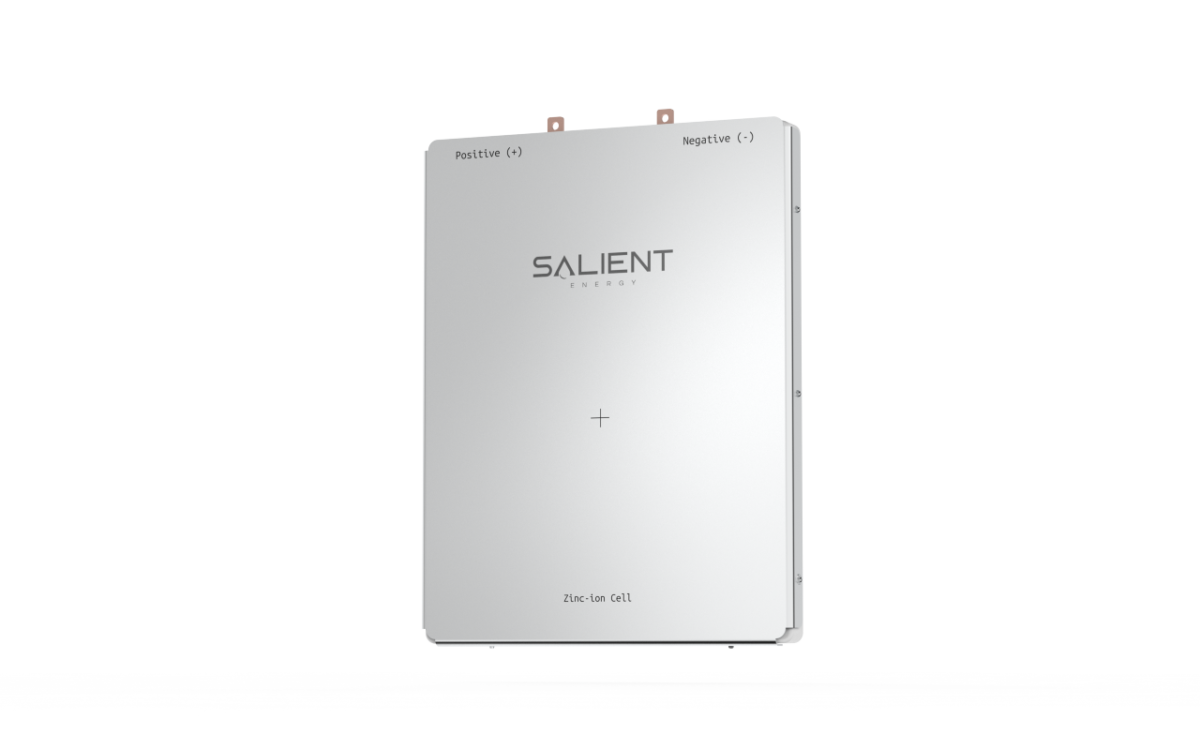Salient Energy successfully completed UL9540A safety testing with Underwriters Laboratories (UL) for its proprietary zinc-ion energy storage battery. The battery is designed as a safer alternative to lithium-ion systems in residential and commercial energy storage applications. Developed by Canadian start-up Salient Energy, the zinc-ion battery has a rated capacity of 60 Ah, a nominal voltage of 1.3 V, and a volumetric energy density of 100 Wh/L. The testing performed by UL showed that zinc-ion cells so not experience thermal runaway nor do they produce toxic or explosive gasses even when subjected to extreme heat, puncture or overcharging.
Salient reports thtat these are the first zinc-ion cells to achieve the UL9540A safety rating, marking a significant step forward in the commercialization of the batteries. UL9540A tests the safety of energy storage systems (ESS) by first determining whether the ESS uses batteries that introduce a risk of fire or explosion. If so, the test then determines whether safety features integrated into the pack and system sufficiently mitigate these risks. As confirmed by the UL9540A results, Salient’s water-based battery is fundamentally incapable of causing the catastrophic failures that occur in lithium-ion based systems. Salient reports that because zinc-ion batteries are the only non-lithium batteries that can match lithium-ion performance with the same compact design, Salient’s technology represents the only drop-in replacement that can remove safety risks in existing ESS designs.
“Solving climate change requires wide-scale deployment of energy storage this decade, but this won’t be possible if energy systems keep erupting in flames and emitting toxic gases,” said Ryan Brown, CEO of Salient Energy. “The industry urgently needs to switch to safe batteries to maintain the public’s enthusiasm for installing batteries in their homes and neighborhoods.”
Zinc-ion batteries achieve this improved safety by using raw materials that are different from those used in lithium-ion batteries. In addition to being safer, zinc-ion materials are far more abundant. Current shortages in key battery materials like lithium have led to rising costs and long delivery times in the ESS industry. Zinc-ion batteries are made primarily from zinc and manganese, which are both produced in abundance in North America.
The main application market that Salient is targeting is stationary energy storage. “Residential yes, but ultimately we want to be in the shipping containers,” Ryan Brown told pv magazine USA. With the main advantage being safety, Brown sees the zinc-ion battery as a viable alternative for batteries that need to be placed indoors, such as in apartment buildings. “A city is not place to put energy storage outdoors, and with California mandating that apartments must have energy storage, zinc-ion is a safe solution.”
Salient’s recently announced a partnership with Horton World Solutions, a sustainable homebuilder that is installing the batteries in 200K homes that it will be constructing in the Dallas Fort Worth area as well as across the Sunbelt. Construction on these homes will be underway by Q4 of 2022.
This content is protected by copyright and may not be reused. If you want to cooperate with us and would like to reuse some of our content, please contact: editors@pv-magazine.com.









What is the life expectancy of his battery??!!
Can the salient energy zinc ion battery be used on residential home. If so what size and wattage is available.
What is the cost for battery and installation.